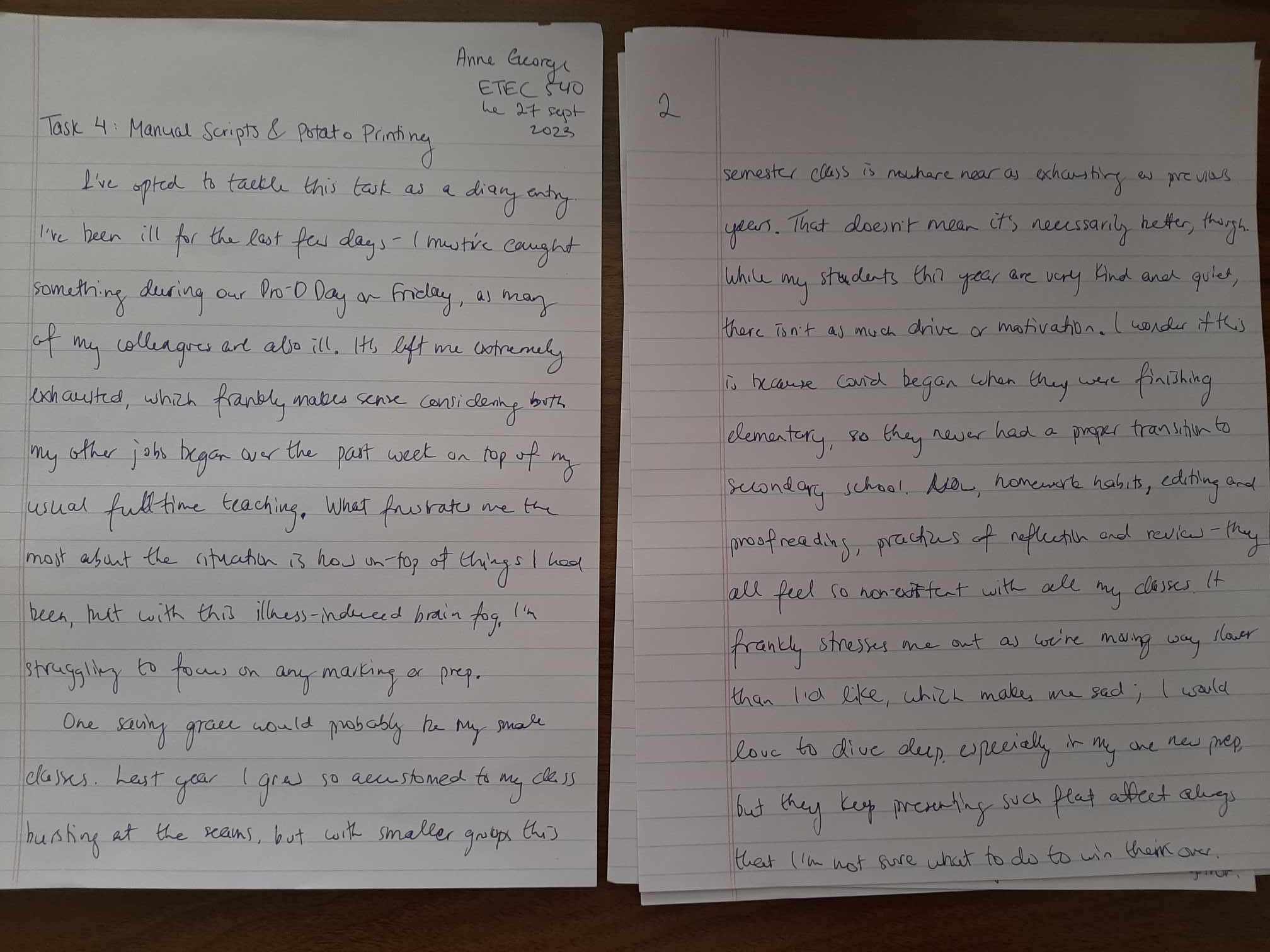For this task, we needed to curate a list of 10 songs from the 27 musical pieces which exist in the Golden Record (NASA, n.d.)
My method for curating the final list focused on Rumsey’s question of what we can “afford to lose” (2017) which was the central thesis of her talk at Brown University. In a mere 10 songs, there is no true way to ensure that we can embody the sheer diversity of culture on Earth. Therefore, I looked at the sounds which each piece on the Golden Record (NASA, n.d.) contained; although I do play many instruments, I am in no way able to completely identify each individual sound placed within this playlist. In lieu of that, I used the brief synopsis provided by Taylor (2019) for each song and my own ear to try and curate a list of songs containing the largest variety of discreet rhythm, pitch, tonal quality, and style, as opposed to looking at culture. Below is a table of my notes, as well as the final 10 songs chosen.
|
Song |
Unique Aspect of Earth, Sound, or the Human Experience |
| Wedding Song – Peru | Raw vocals (young girl) |
| Ugam – Azerbaijan bagpipes | Wind instruments (bagpipes) |
| Bach – WTK 2, no 1, Glenn Gould | String/keys (piano solo) |
| Mozart – Queen of the night – Eda Moser | Opera (orchestra and soprano vocalist) |
| Tchakrulo – Choir – Georgia | Men’s choir (lower chants, layered vocals) |
| Men’s house song – Papua New Guinea | Wind instruments (traditional pipes) |
| Morning Star and Devil Bird – Australia | Raw vocals (deeper male), percussive strings |
| Navajo Night Chant – America | Chorus (soprano), percussion (beads?) |
| Panpipes and drum song – Peru | Wind instruments (panpipes), drums |
| Sacrificial Dance – Comp & Cond Stravinsky | Symphony (ballet) – very jarring (lots of sforzandos) |
| Melanesian panpipes | Wind instruments (traditional panpipes in chorus) |
| Melancholy Blues – L Armstrong & His Hot Seven | Wind instruments, jazz ensemble (Trumpet solo) |
| Johnny B Goode – Chuck Berry | Rock ensemble, vocals |
| Jaat Kahan Ho – India – Surshri | Vocals, pizzicato strings, strings bowed |
| Iziel je Delyo Hagdutin – Bulgaria | Wind instruments (pipes in chorus), vocals |
| Dark was the night – Blind Willie Johnson | Strings (guitar), vocals |
| Fairie Round – cond David | Wind instruments (flutes) |
| El Cascabel – Lorenzo Barcelata & the Mari | Strings (guitar, violin, harp), wind instruments, mariachi, vocals (chorus) |
| Flowing Streams – China | Traditional Chinese strings |
| Bach – Gavotte en Rondo – A Grumiaux | String duet (violins) |
| Bach – Brandenburg no 2, part 1 | Orchestra (mainly wind and strings) |
| Kinds of Flowers – Javanese | Bells, mallet percussion, vocals, strings |
| Tchenhoukoumen, percussion | Mallet percussion |
| Beethoven 5th, part 1, Otto Klemperer | Symphony |
| Cranes in their nest – Japan (Shakuhachi) | Wind instruments (traditional flutes) |
My final 10:
- Wedding Song – Peru
- Bach – WTK 2, no 1, Glenn Gould
- Mozart – Queen of the night – Eda Moser
- Tchakrulo – Choir – Georgia
- Melancholy Blues – L Armstrong & His Hot Seven
- Johnny B Goode – Chuck Berry
- Jaat Kahan Ho – India – Surshri
- Iziel je Delyo Hagdutin – Bulgaria
- Kinds of Flowers – Javanese
- Beethoven 5th, part 1, Otto Klemper
References
Brown University. (2017, July 11). Abby Smith Rumsey: “Digital memory: What can we afford to lose?” [Video]. YouTube.
Music from Earth. (n.d.). NASA.
Taylor, D. (Host). (2019, April). Voyager golden record. [Audio podcast episode]. In Twenty thousand hertz. Defacto Sound.



